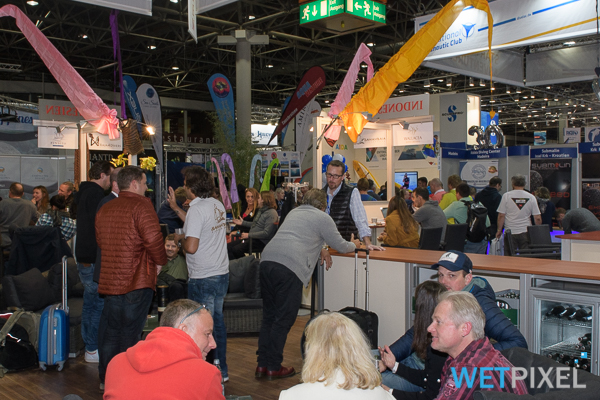Show Report: BOOT 2018
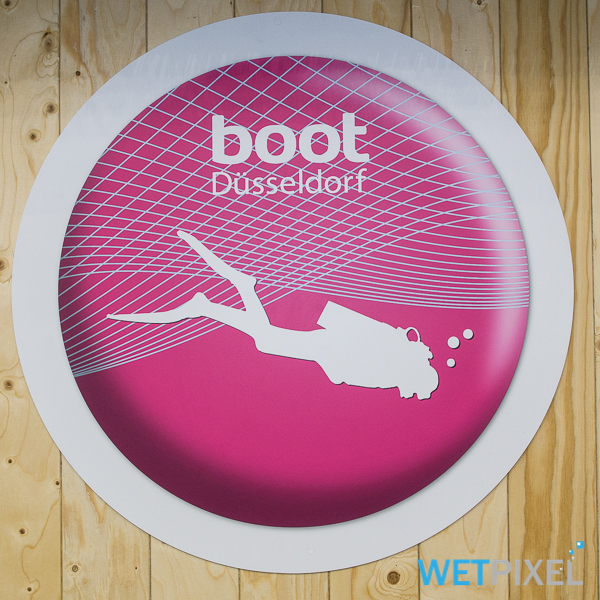
BOOT Show day 2
Wetpixel’s second day at the BOOT show kicked off with a visit to Italian housing manufacturer Isotta’s booth
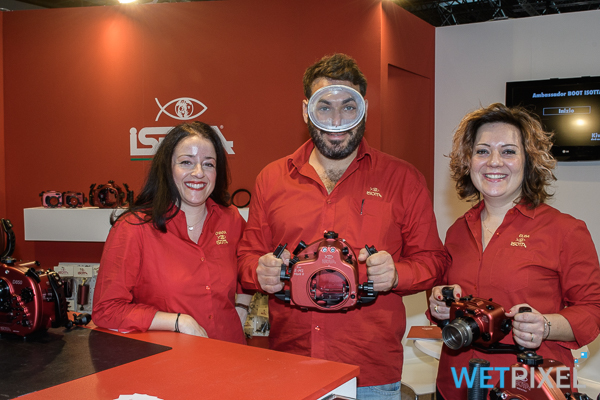
Simon Lorenz showed me their new housings for the Olympus OM-D E-M1 Mark II and the OM-D E-M5 Mark II. The former inherits its design and feature set from the company’s SLR housings, while the latter leans towards their compact housings.
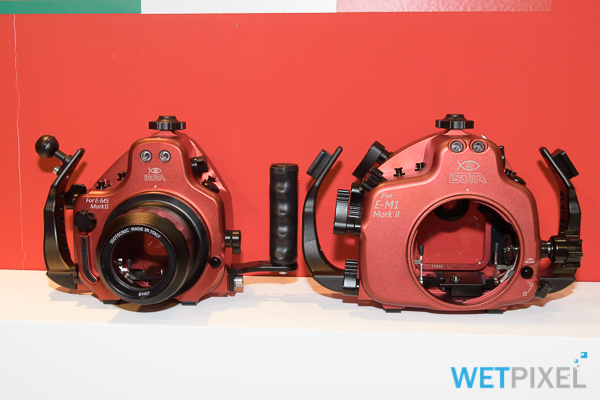
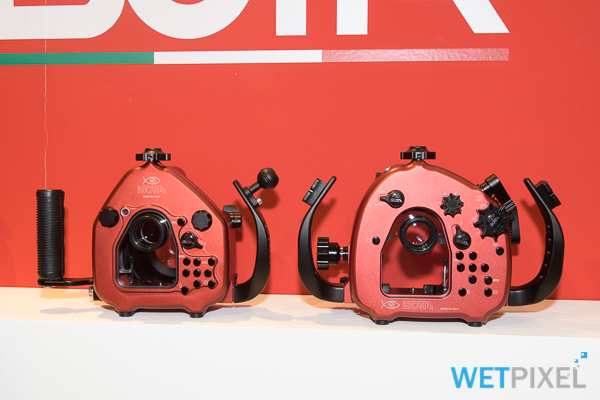
Both have Isotta’s double O ring sealed, one hand opening rear door and fiber optic ports.
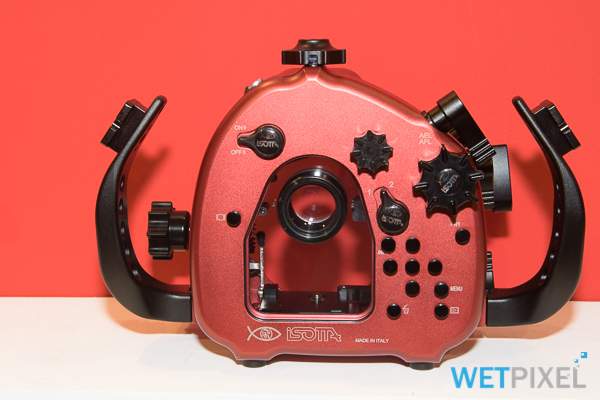
The housing for the OM-D E-M1 Mark II has large dials, controls and levers, particularly for ISO, shutter release and AF ON controls. It is compatible with Inon viewfinder and ships with a pair handles. It retails for €1650.
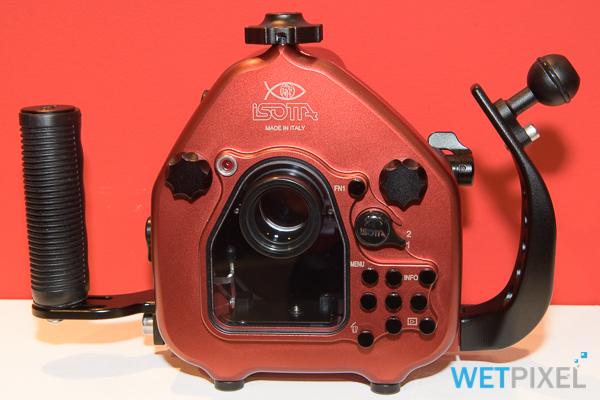
The housing for the OM-D E-M5 Mark II is compact and lighter than its bigger sibling. Its controls are smaller, although it is still fully featured. It doe snot ship with handles, but Isotta offers a variety of handles (and strobe mounting options) as required. It retails at €1200.
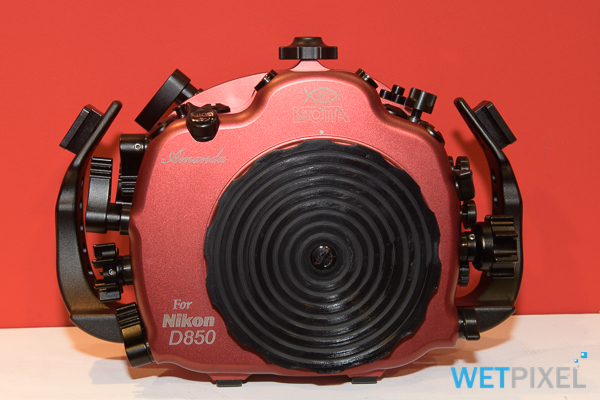
Simon then showed me their new housing for the Nikon D850. The actual housing on display is awaiting well known shooter Amanda Cotton and has been laser etched with her name. Isotta offers the option of adding this and/or a logo to all their housings for a nominal fee.
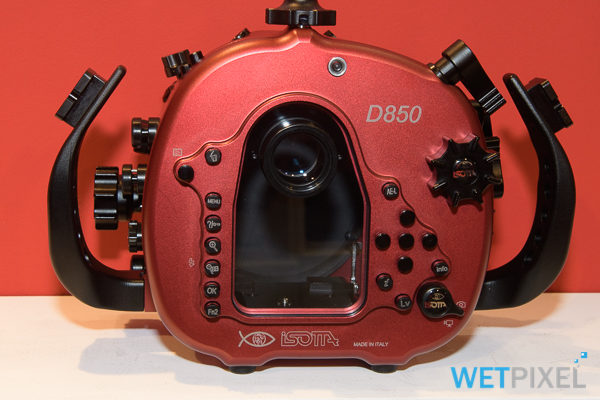
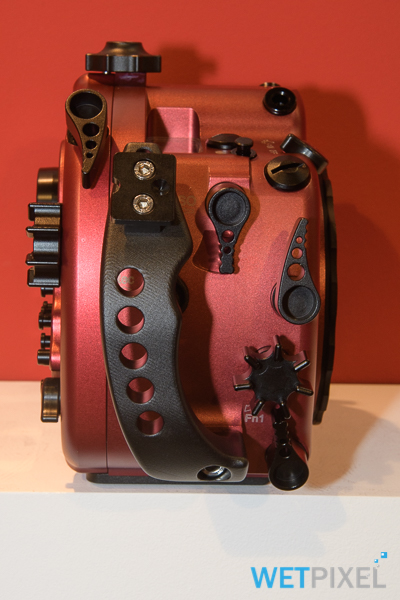
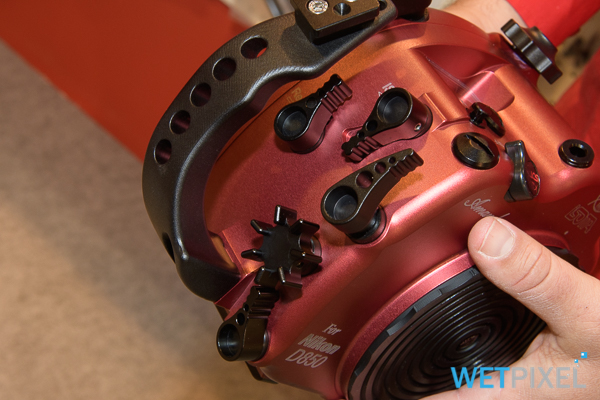
The D850 housing has 4 M16 accessory ports, and Isotta offers the option of Nikonos, S6 or Ikelite ports bulkheads as required at €45 each.
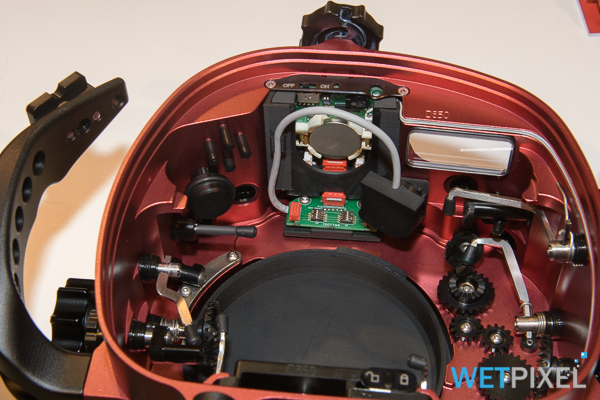
It also features an integrated optical TTL converter, powered by an oversize battery that powers both the TTL board and the housing’s visual and audible leak alarm.
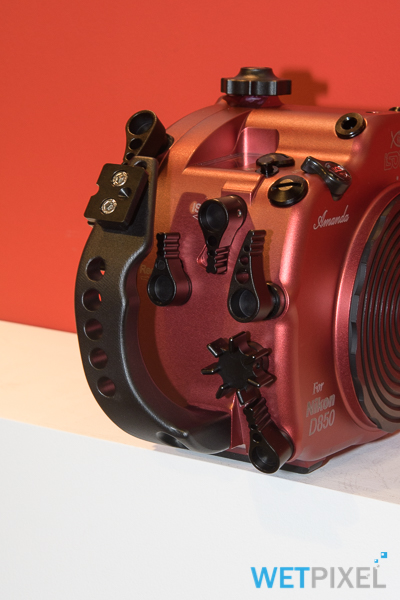
Isotta has machined considerable more metal from the housing, providing a dry weight of 2.7kg, and Simon reminded me that the whole housings can be effectively disassembled with three allen keys for repair or maintenance. Retail is €2950.
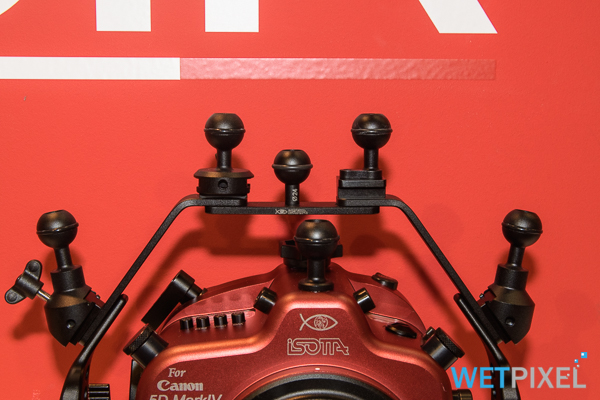
Isotta offers a wide range of ball mounts.
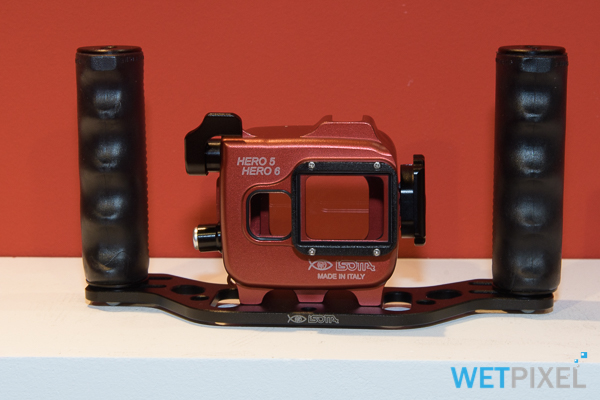
Not a new product as such, but Simon showed us the company’s housing for the GoPro HERO 5 and 6. It is tested to 200m and accept standard accessories like Backscatter’s Flip filter system.
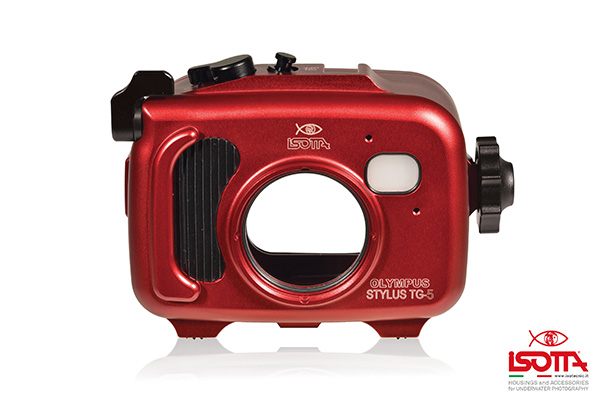
Isotta has recently released new housings for the Olympus TG5 compact camera and the Panasonic GH5.
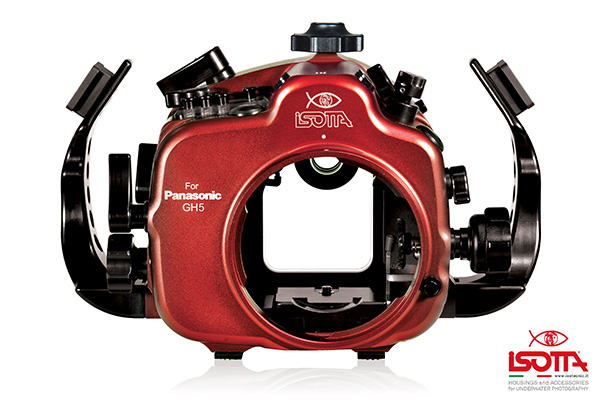
Although these were not at the show, they were kind enough to share some images of them.

Simon mentioned that there are conversion rings available to allow the use of Isotta housings with: Subal, Seacam, Sea&Sea and Hugyfot lens ports.
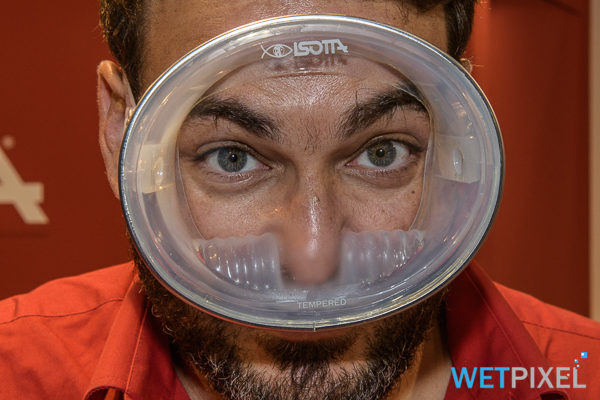
Italy has a proud tradition of Photosub or Shootout type competitions and these frequently involve using models. Isotta offers a mask specifically designed for models, with a high volume clear frame and round face plate.

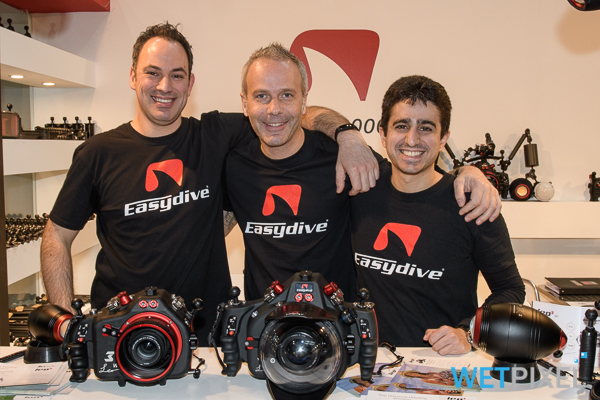
The next company to visit was another Italian concern, Esaydive. Fabio and his team have been expanding their concept of wifi and bluetooth control of camera functions.
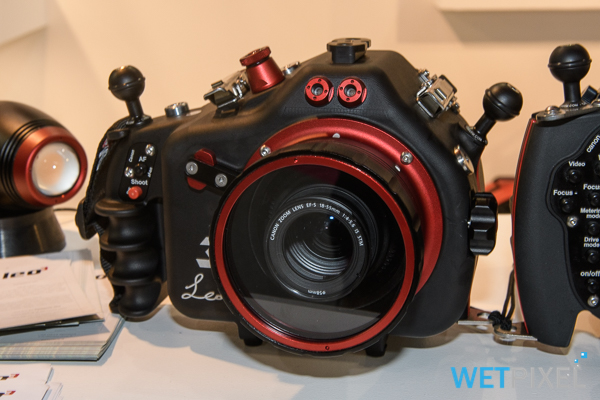
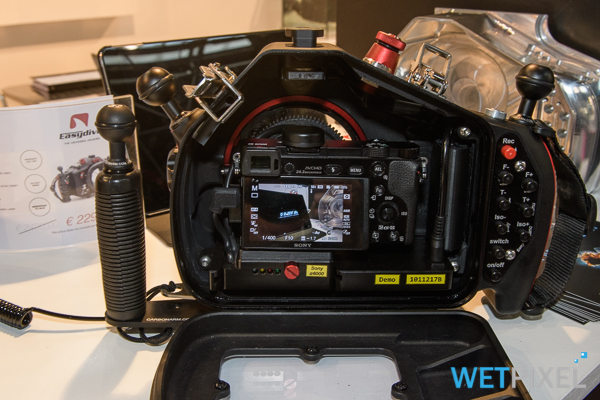
The Leo 3 wi small SLR and mirrorless housing is now compatible with: Sony a7RIII, a9, Panasonic GH5/GH5s, Canon 800D and Nikon D7500.

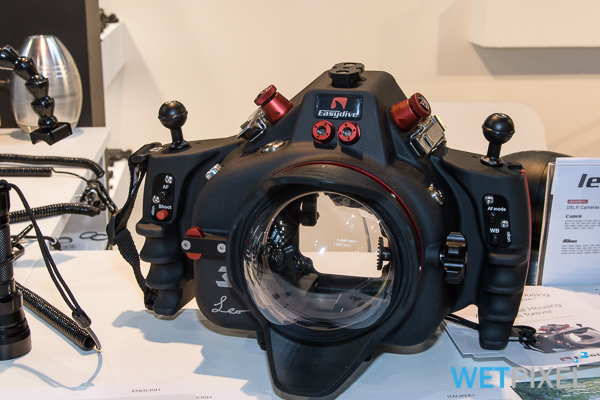
The USB controlled Leo 3 is now compatible with Nikon D850 and D500, along with Canon 5D Mark IV and 7D Mark II.
Easydive are also offering a new smartphone housing.
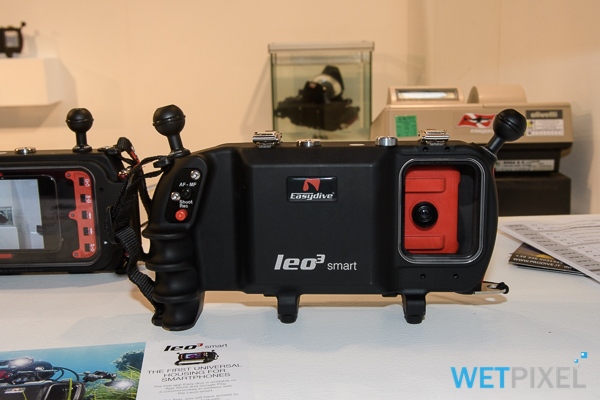
The Leo 3 smart uses an iOS and Android app to communicate wirelessly with a suitable smart phone.
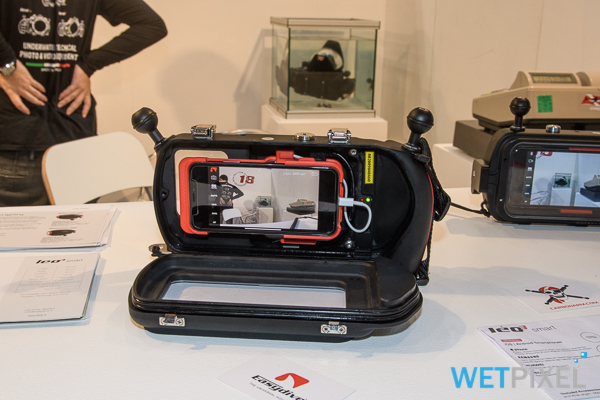
A location saddle is required to mount the phone, and this ensue long term compatibility. It has push button controls and stainless steel latches.
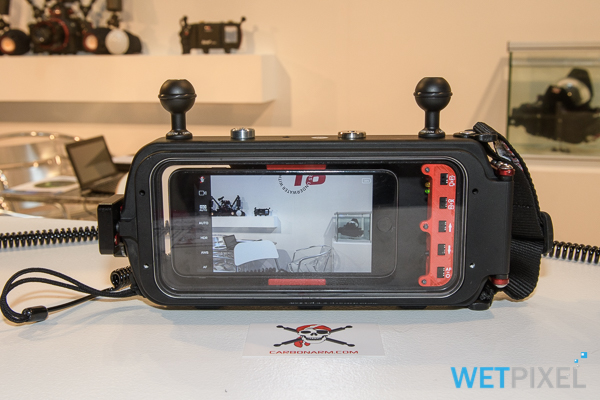
The Carbonarm Diveshot housing uses Bluetooth “touch” control via a series of infra red sensors to control camera phone functions.

The phone is mounted via a universal spring loaded holder.
Easydive/Carbonarm (two divisions of the same company) will be offering compatible accessories, including lenses and battery packs for both smartphone housings soon.
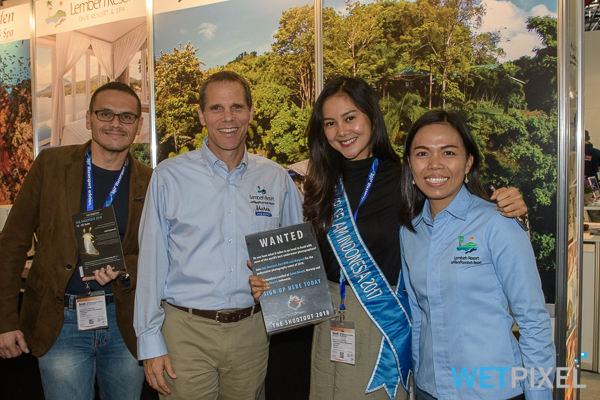
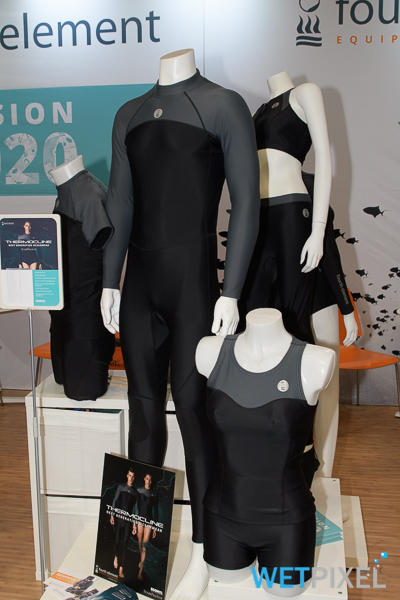
Fourth Element were showing their new Thermocline neoprene free wetsuits contracted of recycled polyester derived from discarded fishing nets.
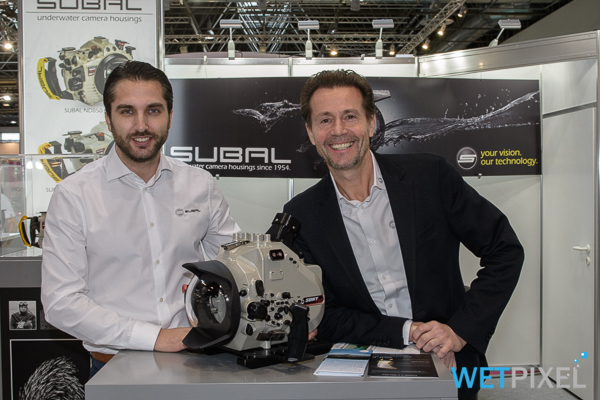
I then visited Subal. Vladimir Mladenovic and Harald Karl showed me their housing for the Nikon D850.
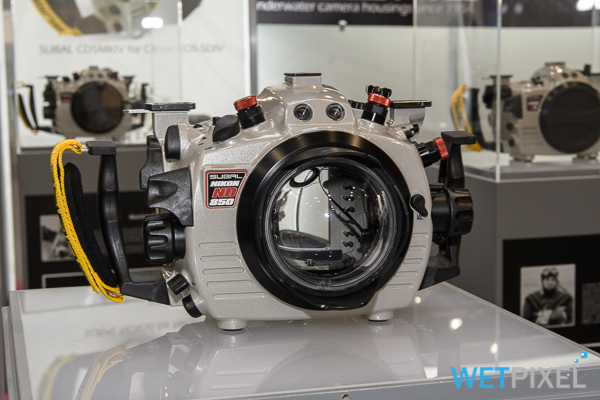
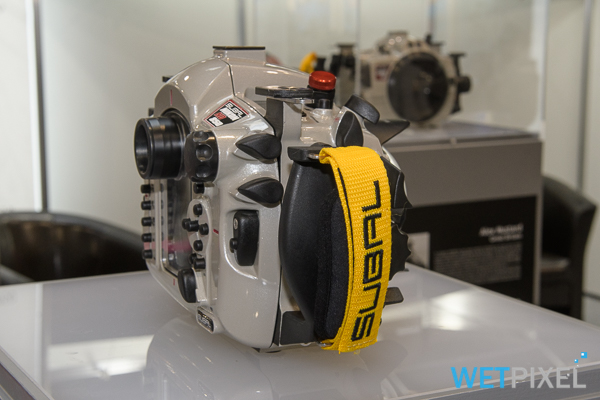
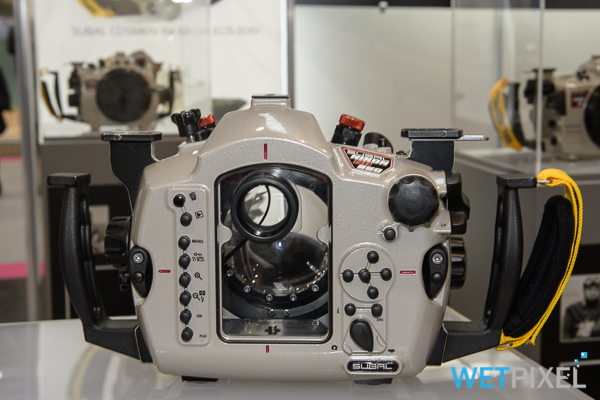
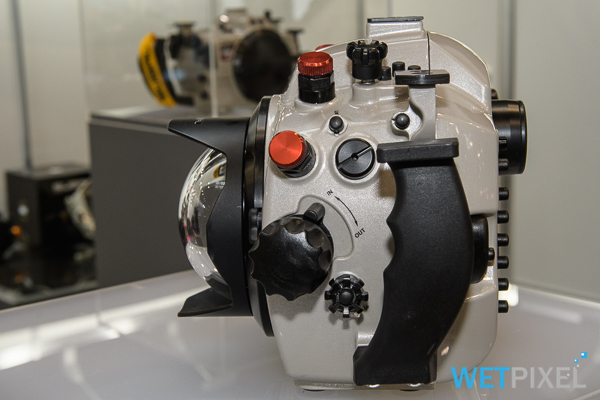
This will be shipping shortly after the show.

The company plans to support the Sony FS7 Mark II Super 35 4K XDCAM.
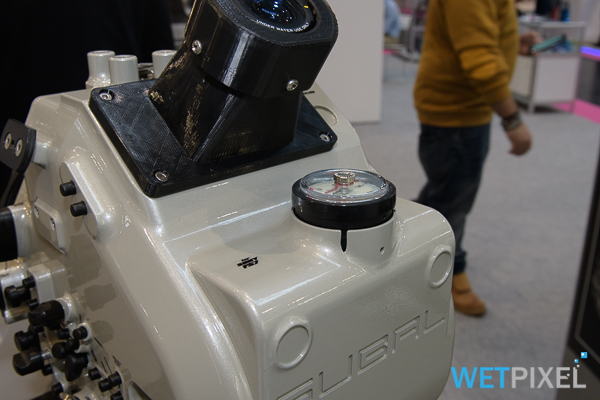
This will be shipping in February. Another forthcoming housing will be for the Canon EOS C200, which Subal expect to ship at the end of February.

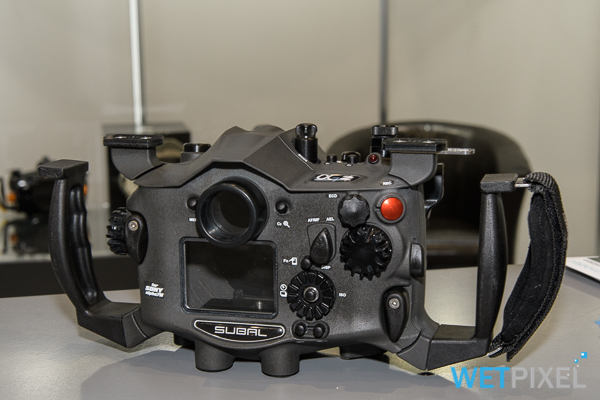
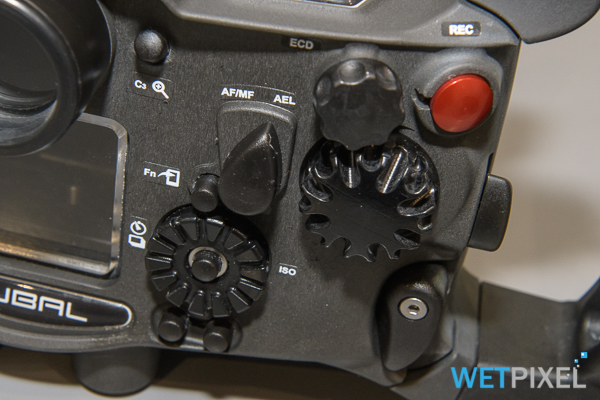
Returning to smaller cameras, Subal expect to ship their housing for the Sony a7rIII in March, and they will be supporting the Olympus OM-D E-M5 Mark III too.
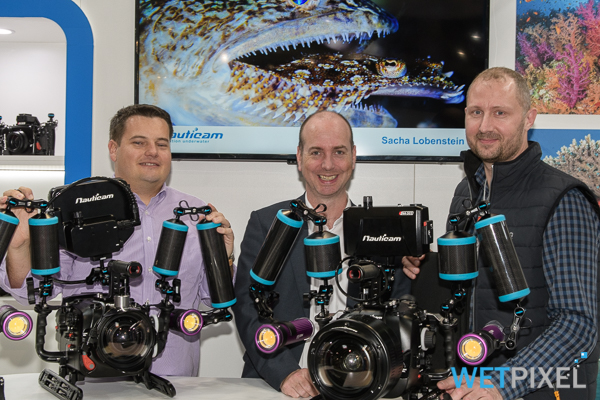
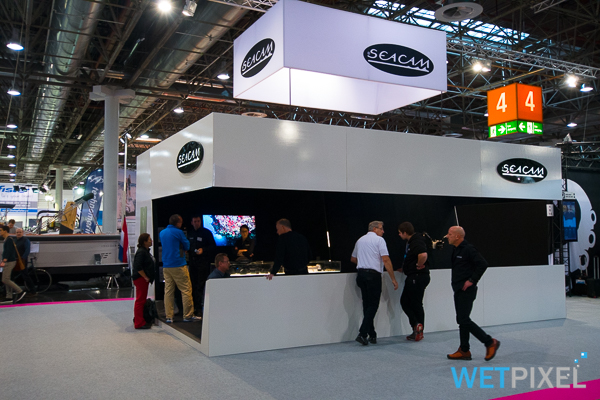
Seacam has moved their booth from the “general” diving Hall 3 to the imaging focused Hall 4. I met with owner Harald Hordosch who showed me though his new products.
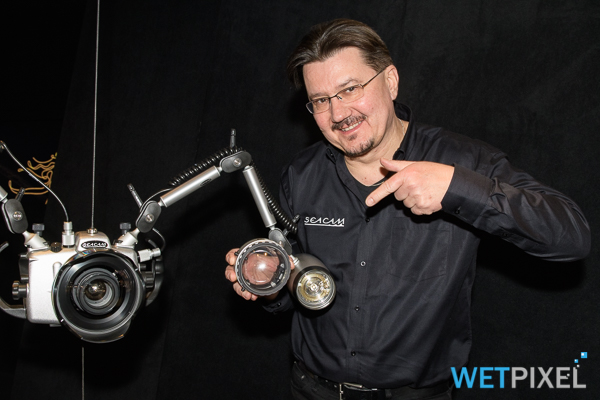
Broadly speaking, Seacam uses three sizes of housing. Big camera bodies like the Canon IDX Mark II use the large, medium bodies like the D500 use the medium and cameras like the OM-D E-M1 Mark II use the small.
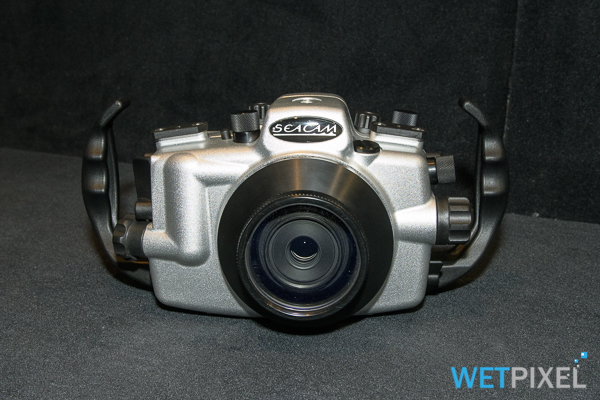
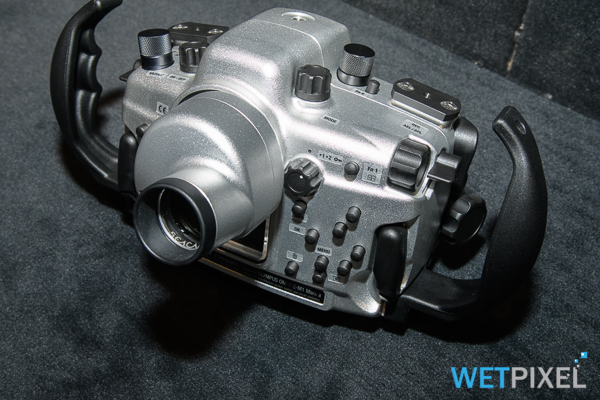

Harald showed me the very compact new Seacam housing for the latter.
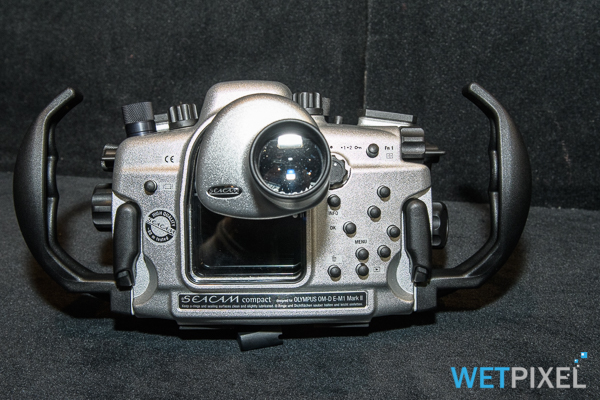
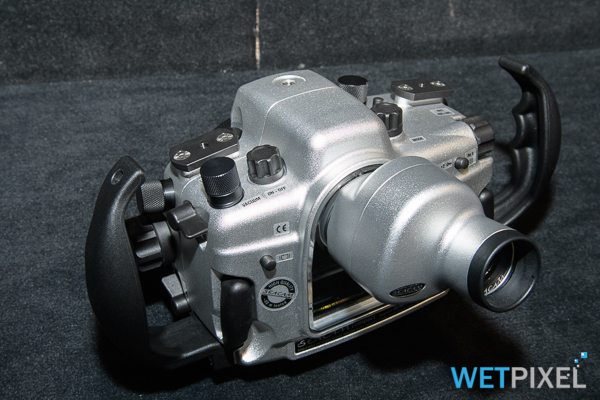
It is specifically designed and optimised to take full advantage of a 45° or 180° magnified viewfinder, and it was amazing how big and bright the EVF’s image appeared when used with one.
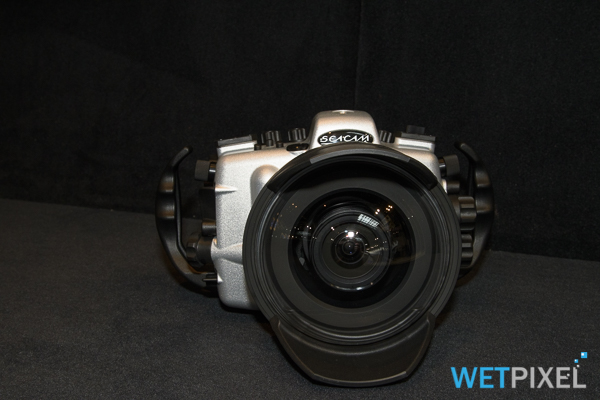
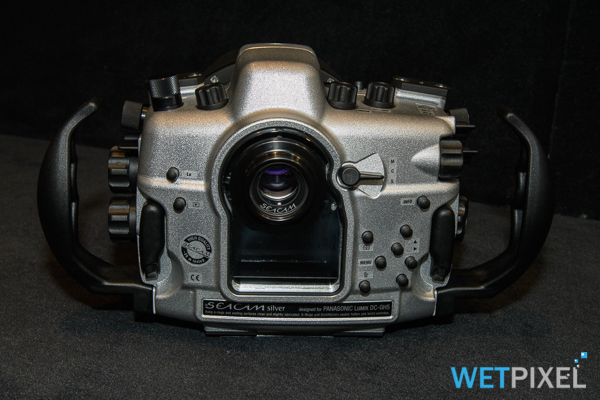
Harald then showed me the new housing for the Panasonic GH5. This uses the medium sized enclosure, but is narrower then an SLR housing.

In part, this is to allow plenty of space for adding an external monitor and its associated wiring, along with other accessories like external power or USB control (the housing has a total of 5 M16 ports).
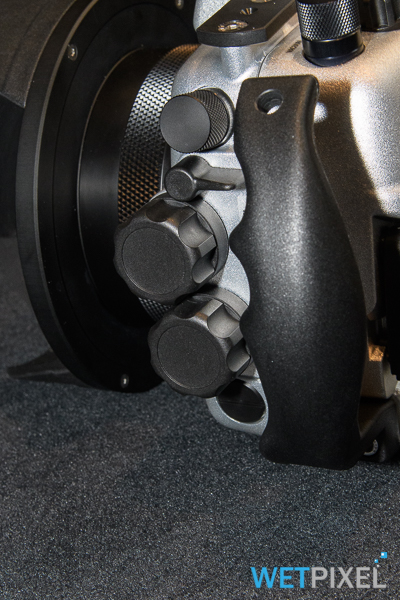
It also makes it easier to weight the housing system for neutral buoyancy.
The rotary controls on the top of the housing are awkward to adapt controls for, so Seacam has machined delrin gears that attach to them.
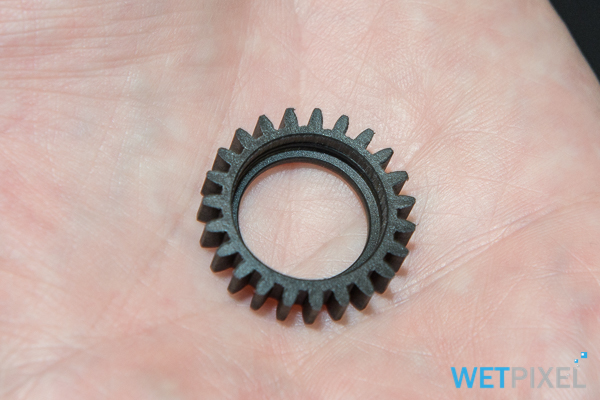
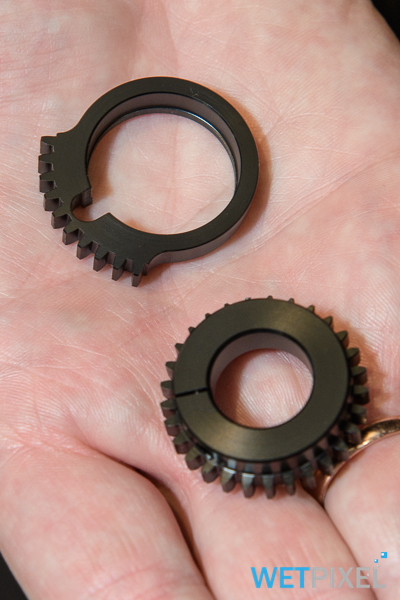
Harald feels that this is more positive than using rubber “pushers.” The gears attached via friction fit with small O rings providing a secure grip.

The controls required for the camera are quite complex and there are spring loaded rotating controls to ensure that they interface correctly with the camera.
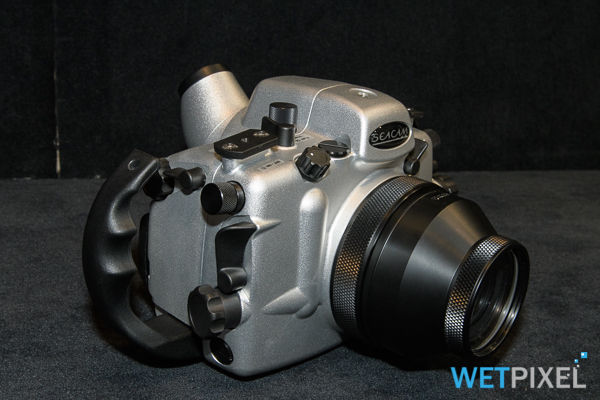
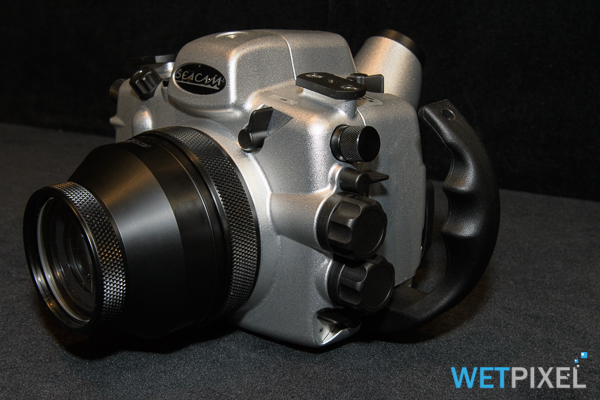
Seacam’s housing for the Nikon D850 was also at the show. It features a total of 5 M16 ports, again to accommodate HDMI monitors, vacuum systems or other wired accessories.
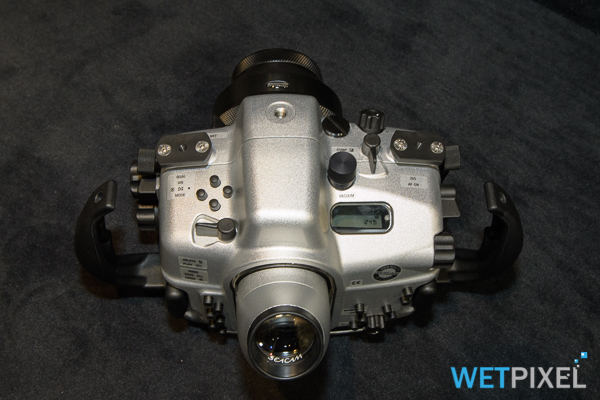

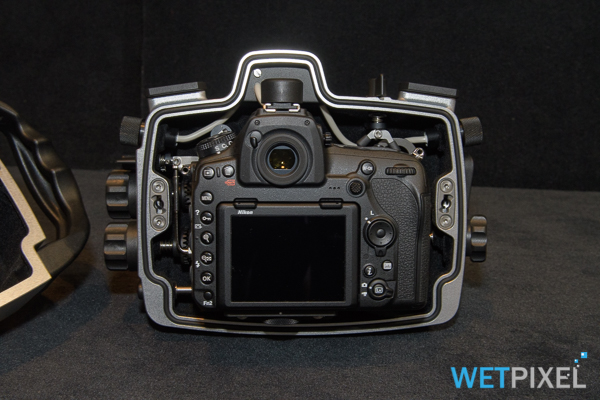
The ISO control is on a dual action lever that is operated by the right hand thumb. Pushing down activates AF, while pushing it up allows the ISO to be adjusted.

Harald showed me a novel housings for the Nikon KeyMision 360 VR camera. It is constructed of mineral glass and aluminum, is depth resistant to over 100 meters and has been used recently by Laurent Ballesta recently for filming at great depth.
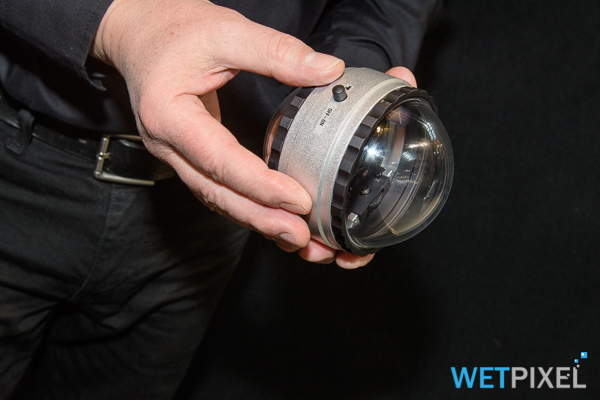
The camera mounts via a simple saddle and the ON/OFF and record functions can be accessed via the housing. It offers M6 and 1/4” threads for mounting.
Seacam uses NiMh battery packs in its strobes. After they are ordered, all cells are individually checked and around 10% are rejected. However, with use and poor maintenance, cells can use their charging capacity. Seacam plans to address this by offering a battery checking and reconditioning device. This should be available later in the year priced at around €200-€250.
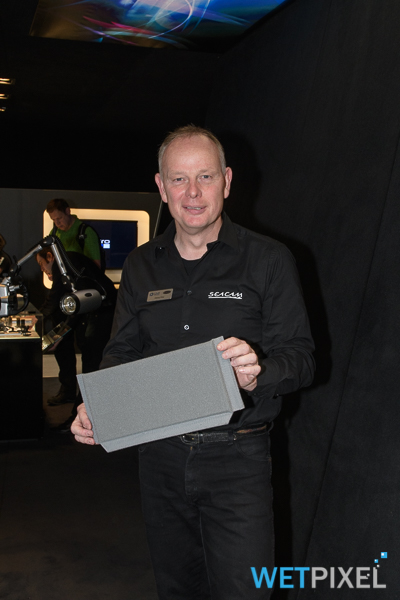
UWE owner Georg Nies has managed to persuade Think Tank Photo to create some dividers that can be used with their bags to create a space for packing housings.
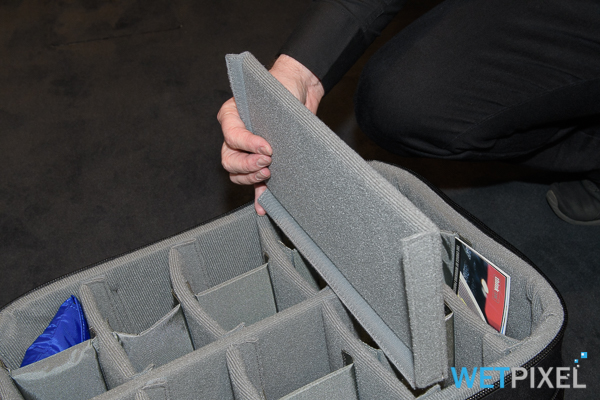
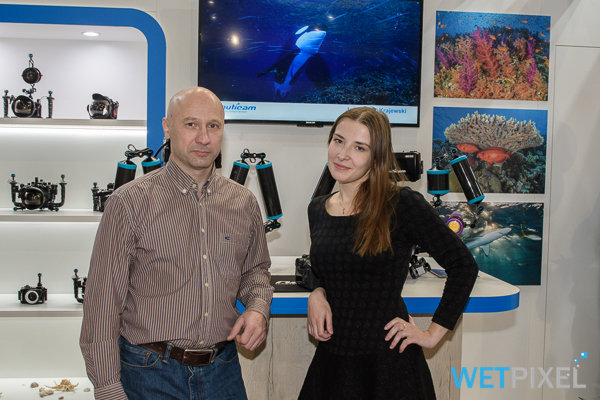
It was great to meet a significant contributor to the Wetpixel forums and owner of UWTechnics, Pavel Kolpakov. Pavel builds OEM and after market TTL circuits for many housings. Among them are a two board design that offer fiber optic TTL to recent Sea&Sea housings that allow the user to retain pop up flash if required. It also provides TTL flash control with Inon, Sea&Sea and Ikelite strobes.
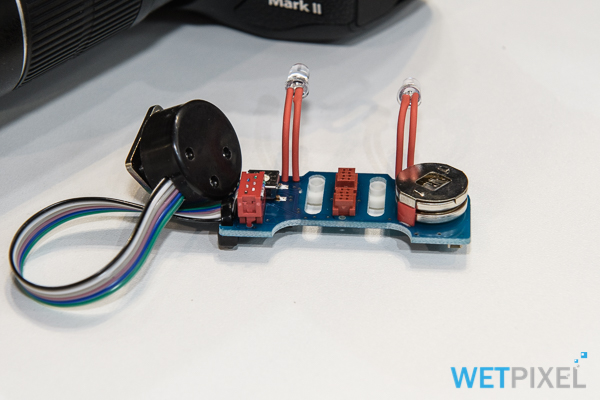
Pavel showed me his new TTL board for Canon. This is being fitted into many housings as an option.

A new product that he is currently working on is an external TTL convertor for Ikelite. Newer Ikelite housings do not ship with TTL control and Pavel’s circuit also offers exposure control with Inon and Sea&Sea strobes.
TTL control requires a very precise optical signal in order to accurately provide the correct amount of light to expose the scene. This requires the user to ensure that the fiber optical cables used are capable of doing so. Nauticam, Inon, Howshot and Sea&Sea are using cables that have 613 fibres, ensuring this.

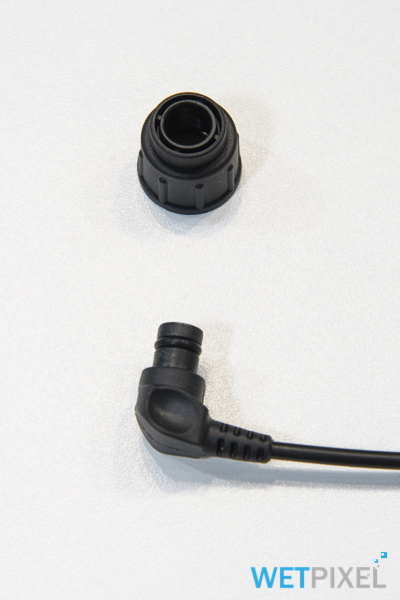
Nauticam are also now offering a “Universal Single Fiber Optic Cable” which can be switched between Nauticam and Inon fittings. Ryan Canon alas explained that dual fiber optic cables are problematic for faithful TTL reproduction as it is hard to ensure that each cable is entered and hence receives an equal share of the trigger’s output.
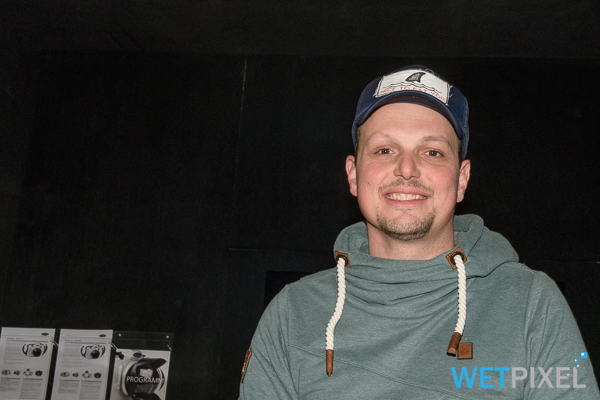
The Indonesia booth hosted a small after party:
